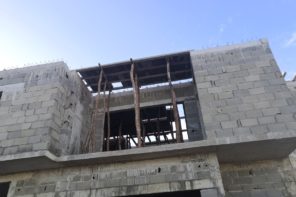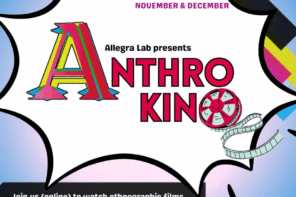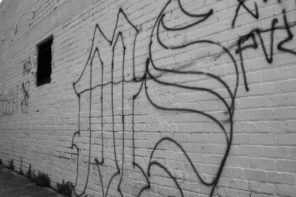It is early, the sun has only just begun to rise. A bird swoops from her nest to rest on an electric wire. She overlooks an intersection, a residential street that merges into the city’s large business district. It is lined with what were once single-family homes – most now contain at least 4 apartments – made of brick, with cement stoops jutting out in front. A bodega sits at the corner, its windows plastered with advertisements for phone cards and cigarettes. Across the street, an unnamed dollar store, selling every item imaginable. A maple tree waving in front of the bird periodically blocks her view of the junction.
––––
A man emerges from the corner and walks up to the bodega. It is his family business, started by his father when he moved to the city 20 years ago. He unlocks the iron grill, then the locked door, multiple layers of protection from the outside world. Just last week his friend’s deli had their glass door shattered, probably by some stupid kids. They have no respect for the neighborhood anymore.
––––
A bus pulls up, and a man in a uniform with SECURITY stenciled across his back steps off. He waves to the bodega owner – “morning!”. He works down the street in a new apartment building. He is not from very far away, having grown up in a similar neighborhood. Now he protects the residents of the building from the outside world. The buildings’ residents greet him cordially, although not quite familiarly, despite passing by his station daily. But the pay, if not amazing, is at least steady.
––––
A young boy walks with his grandmother on the way to school. He moves to run across the street and she stops him with a sharp remark. These streets are dangerous, with busses and taxis zipping by, especially in the morning as everyone emerges from their homes to begin their lengthy commute to work. A little boy has to be careful. An unmarked taxi rushes by as they stand by the side of the road, pressing his horn. Once the way is clear, she leads him across and they are on their way to grade 2.
––––
A middle-aged man is asleep in the doorway of a shuttered shop. A cop comes by and wakes him up with a hard jab of his truncheon – “move along, you can’t sleep here!”. They never used to care, but recently a new craft brewery has opened down the street. Since the South Bronx has been rebranded “SoBro” – or “The Piano District,” depending on whom you ask – places like this have been popping up. The owners of the brewery have never made a complaint, and even give the man water whenever he asks for some. But the cops seem sure he is suddenly a bother to the neighborhood, and make sure that he moves along before the street gets busy.
––––
A man in a business suit approaches the crosswalk. A newcomer to New York and unfamiliar with the city, he has taken a wrong turn and gotten off the subway at the wrong stop. How did he end up all the way up in the Bronx? He pushes his shirt sleeve down to make sure it is fully covering his watch. He is nervous, checking over his shoulder and around himself. He knows this neighborhood is rife with crime, his new colleagues and neighbors have warned him to stay away. He should have called his brother for directions before trying to get around himself, how stupid!
––––
Set in the South Bronx, this short story depicts how different individual lives interact with space and the wide array of ways that violence can be expressed and imposed on individuals in an urban setting. It offers very little background on each person; instead, the focus is on how they interact with the neighborhood in the moment.
––––
His brother puts on his jacket on his way out the door of his home in Long Island, saying goodbye to his wife and daughter (she sits in front of their TV, watching “West Side Story”; it is her favorite musical – how cool that it was filmed right here in the city, in the Upper West Side!). He gets into his car to begin his long commute. He pulls out of his driveway, makes a couple turns and then merges onto the Cross Bronx Expressway. It is one hell of a road, always congested, but it makes his ride to work possible. Without it, he wouldn’t be able to live in his beautiful home outside the city, with a yard and everything. He’s heard that there used to be some nice houses along the highway, but it’s now mostly no-man’s land, and the few houses that remain are all broken down. Those kinds of places only encourage crime, so hopefully they will go soon.
––––
Back to our intersection. A woman pushes a cart slowly down the side of the street. She avoids the sidewalk, not wanting to risk the cracks toppling her wares, individually packed bags of sliced mango, which she sells for $3 each. She buys the mangos early at the wholesale market, and then slices them up to sell during the day. She is always aware, keeping an eye out for police. Without papers, she is unable to get a permit for her little business, and the police like to crack down on street vendors every so often. The neighborhood is heavily policed, so she is always a bit on edge, knowing her situation is precarious.
––––
A man, mid-height and skinny. More of a boy, depending on whom you ask. He is hanging around one of the stoops, apparently not doing anything much. A gun is clearly visible, stuffed into his waistband. He is a member of the local gang, comfortable in his territory. Another fellow walks up to him, checking his surroundings. They greet with a friendly hand slap, make a quick exchange and he is on his way. Smooth, well-practiced. He walks down to the bodega for a pack of cigarettes.
––––
There is a ruckus. It appears to be coming from the bodega. A different boy runs out of the store, closely followed by the gang member who had just entered. He quickly catches up and jumps him, knocking him down to the sidewalk. This new boy has a gun too. It seems he tried to rob the bodega owner, but was chased down before he could do so. The bodega owner is a long-standing neighborhood resident, and he keeps eyes on the street, keeping it safe and letting the right people know when he spots the police. No outsider will mess with him without suffering consequences.
––––
An old woman leans her head out over her fire escape to see what’s going on. The radio plays in the room behind her, announcing the news. There was another fatal shooting, just two streets down. A young man, in the early hours of the night. Homicide rates have been going down, but she still worries for her grandchildren. People are killed on purpose, and passers-by by accident, far too frequently. She listens for names and checks up on her grandchildren every time she hears a report of a shooting on the radio.
––––
A pretty woman emerges from the house next door, dressed in a tight blazer and high heels. She is heading to yet another job interview. She tries to keep her hopes up, but it is getting tiring. She used to work downtown, but public transportation in the city is so unreliable. Having been late to work too many times, she was let go. She misses the lost income, sure, but does not miss the fear that came with having to catch the 5am bus for her opening shift. She is no idiot, and she knows the dangers that a young woman like herself runs waiting for the bus outside of daylight hours.
––––
Perched on the wire, the bird lets out a squawk. Time to move on. The smog from the factories and the truck traffic is making her wheezy anyway. No wonder all these kids have asthma. Where to next? She opts to head North, where she can fly over the many green areas in the Bronx, rather than the hazardous glass walls of Manhattan.
Explanatory appendix
My short fiction is based primarily on Marie-Louise Glebbeek and Kees Koonings’ article, “Between Morro and Asfalto: Violence, insecurity and socio-spatial segregation in Latin American cities”, Habitat International, 54(1): 3-9 (2016). This article discusses how violence is more complex and “a strategy to control urban space”, and is “endemic” to “urban life and the urban condition” in Latin America. They discuss urban violence as perpetrated by gang members and criminal organizations, as well as by the state and law enforcement, and consider how violence and fear is spatially differentiated, taking different forms and degrees in different neighborhoods. Their article offers us a bird’s eye view of urban violence, and I decided to write a short story that depicted how different individual lives interact with space and the wide array of ways that violence can be expressed and imposed on individuals in an urban setting. Instead of Latin America, I chose to set it in the South Bronx, a New York neighborhood which – in popular conception – was historically associated with inner-city blight, crime, and urban violence, but which has undergone significant transformations over the past few decades.
Different versions of the city exist at the same time, sometimes overlapping, sometimes “fragmented” – in many ways mirroring Glebbeek and Koonings’ conception of the “fractured cities” of Latin America.
My story offers very little background on each person; instead, the focus is on how they interact with the neighborhood in the moment. Neither do I pass judgment on whether each individual’s perception of violence and of the city is valid or correct. Rather, the story aims to show how cities are multifaceted entities that are experienced differently by people depending on their race, gender, economic means, profession, and age, among other factors. In this sense, cities are less an objective reality than a “practice of the everyday”, constituted by the lives that pulse within them. The story starts with the bird as a putative “neutral” observer, detached from the microcosm of life in the city would view it, but the final paragraph highlights how nature itself is also impacted by the urban, in a way that could also be considered a form of violence.
In terms of form, I was inspired by a short form style that highlights many different stories in quick succession, similar to that of Italo Calvino’s famous book Invisible Cities. I was particularly drawn to the way that Calvino describes apparently vastly different places as being in the end all the same city, which reinvents itself constantly over time. Different versions of the city exist at the same time, sometimes overlapping, sometimes “fragmented” – in many ways mirroring Glebbeek and Koonings’ conception of the “fractured cities” of Latin America.
Featured image by Takisha Rappold (Courtesy of pixy.org)









